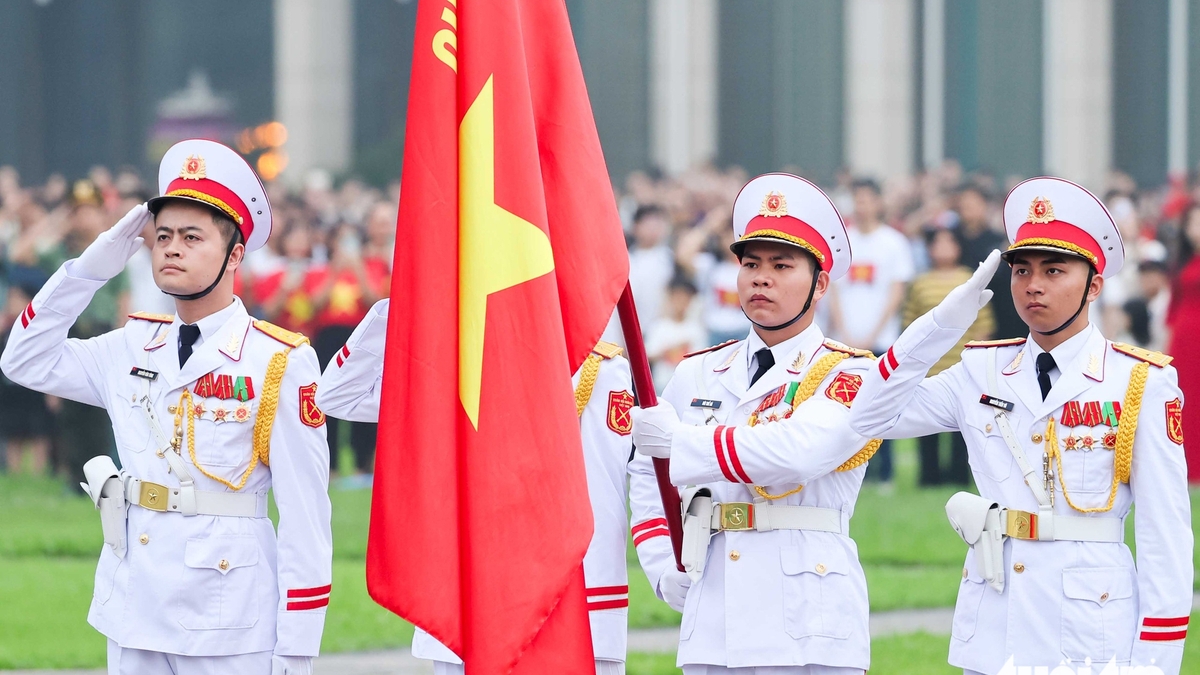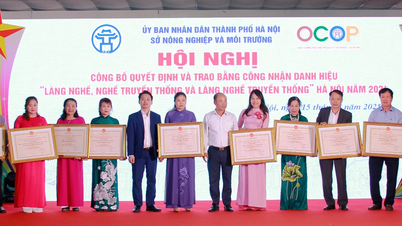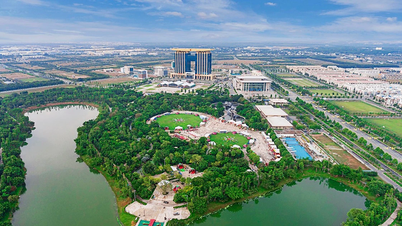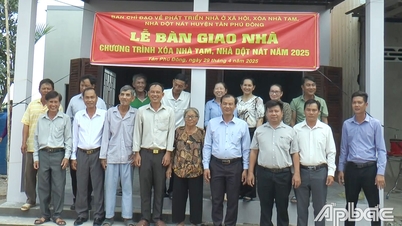RESOLUTION
On the arrangement of administrative units in 2025
STANDING COMMITTEE OF THE NATIONAL ASSEMBLY
Pursuant to the Constitution of the Socialist Republic of Vietnam;
Pursuant to the Law on Organization of the National Assembly No. 57/2014/QH13, amended and supplemented by a number of articles under Law No. 65/2020/QH14 and Law No. 62/2025/QH15;
Pursuant to Law on Organization of Local Government No. 65/2025/QH15;
RESOLUTION:
Chapter I
GENERAL PROVISIONS
Article 1. Scope and objectives of administrative unit arrangement in 2025
1. This Resolution stipulates the arrangement of provinces and centrally run cities (hereinafter referred to as provincial-level administrative units) and the arrangement of communes, wards and towns (hereinafter referred to as commune-level administrative units) in 2025 according to the resolutions and conclusions of the Central Executive Committee, the Politburo and the Secretariat on continuing to arrange the apparatus of the political system, arrange administrative units and organize two-level local governments.
2. The arrangement of provincial-level administrative units stipulated in this Resolution is the merging of provinces with provinces to form new provinces or the merging of provinces with centrally run cities to form new centrally run cities according to the arrangement orientation approved by competent authorities to reduce the number, increase the scale of administrative units, expand development space, and maximize the potential and advantages of localities.
3. The arrangement of commune-level administrative units stipulated in this Resolution is the establishment, dissolution, merger, division of administrative units, and adjustment of the boundaries of commune-level administrative units to ensure appropriate quantity and scale, the whole country reduces the number of commune-level administrative units by about 60% to 70% compared to the present, meeting the requirements of organizing local authorities at the commune level close to the people, operating effectively, efficiently, and effectively. In the case of arranging wards with administrative units of the same level, the administrative unit formed after the arrangement is the ward; in the case of arranging communes and towns, the administrative unit formed after the arrangement is the commune.
Article 2. Principles of administrative unit arrangement
1. Ensure the leadership of the Party and strengthen the leadership and direction role of heads of agencies and organizations in implementing administrative unit arrangement.
2. The arrangement of administrative units must comply with the Constitution, in accordance with the provisions of the Law on Organization of Local Government and this Resolution.
In case the arrangement of administrative units is in accordance with the orientation approved by competent authorities, it is assessed as being in accordance with the relevant planning approved by competent authorities.
3. The arrangement of provincial and commune-level administrative units is carried out for administrative units whose natural area or population size does not meet the standards of the corresponding administrative unit prescribed in Resolution No. 1211/2016/UBTVQH13 dated May 25, 2016 of the Standing Committee of the National Assembly on standards of administrative units and classification of administrative units, which has been amended and supplemented by a number of articles according to Resolution No. 27/2022/UBTVQH15 dated September 21, 2022 of the Standing Committee of the National Assembly (hereinafter referred to as the Resolution of the Standing Committee of the National Assembly on standards of administrative units and classification of administrative units); have similar historical and cultural traditions; have adjacent geographical locations; have appropriate scale, potential, advantages and level of economic development.
4. The development of plans for the arrangement of provincial and communal administrative units must take into account factors related to natural conditions, traffic infrastructure, the distribution and organization of economic spaces to ensure the maximum promotion of the potential and advantages of economic development of each locality, mutual support to promote the overall socio-economic development of the administrative unit after the arrangement; carefully consider factors related to the level and management capacity of local Party committees and authorities, the level of digital transformation, application of information technology by local authorities and people; ensure requirements on national defense and security, build solid defense zones in key areas, island areas, archipelagos and border areas; preserve and promote the historical, cultural and ethnic traditions of each locality; ensure the solidarity of the community.
5. In case of implementing the arrangement of commune-level administrative units that changes the boundaries of district-level administrative units, it is not necessary to follow the procedures for adjusting the boundaries of the district-level administrative units to which the commune-level administrative units belong.
6. Linking the arrangement of administrative units with innovation, reorganizing the apparatus of the political system to be streamlined, effective and efficient; promoting decentralization, delegation of power, enhancing autonomy and self-responsibility of local governments; restructuring and improving the quality of cadres, civil servants and public employees; ensuring that local governments at the commune level are close to the people and serve the people best.
7. When implementing the arrangement of administrative units according to the provisions of this Resolution, the standards on structure and level of socio-economic development, number of affiliated administrative units, type of urban area, level of urban infrastructure development shall not be applied to administrative units formed after the arrangement.
8. Focus on and do a good job of propaganda and mobilization of the people to create consensus, support and high unity on the policy of arranging administrative units.
Article 3. Cases where administrative unit arrangement is not required
Do not make arrangements for administrative units with isolated locations or locations of special importance related to national defense, security, and protection of national sovereignty.
Article 4. Orientation on standards of provincial-level administrative units formed after the reorganization
Provincial-level administrative units formed after the rearrangement must meet the standards on natural area and population size of the corresponding administrative unit as prescribed in the Resolution of the National Assembly Standing Committee on standards of administrative units and classification of administrative units. In case of rearrangement of a province that has been oriented to become a centrally-run city, the province formed after the rearrangement must basically meet the standards on natural area and population size of a centrally-run city.
Article 5. Orientation on standards of commune-level administrative units formed after the rearrangement
1. Based on the principles of administrative unit arrangement stipulated in Article 2 of this Resolution, the Provincial People's Committee is responsible for developing and selecting a plan to arrange commune-level administrative units suitable to the characteristics of rural, urban, island, mountainous, highland, border, plain, and ethnic minority areas and meeting the following orientations:
a) Mountainous and highland communes formed after the rearrangement have a natural area of 200% or more and a population size of 100% or more of the standards of the corresponding commune prescribed in the Resolution of the National Assembly Standing Committee on standards of administrative units and classification of administrative units;
b) Communes formed after the rearrangement not covered by Point a and Point d of this Clause have a population size of 200% or more and a natural area of 100% or more of the standards of the corresponding communes prescribed in the Resolution of the National Assembly Standing Committee on standards of administrative units and classification of administrative units;
c) Wards formed after the rearrangement have a natural area of 5.5 km2 or more; for wards in centrally-run cities, the population is 45,000 or more; wards in provinces formed after the rearrangement in mountainous, highland, and border areas have a population of 15,000 or more; the remaining wards have a population of 21,000 or more;
d) The arrangement of commune-level administrative units under district-level administrative units in islands must ensure national defense and security requirements and follow the orientation approved by competent authorities.
2. In case of arranging 03 or more commune-level administrative units into 01 new commune or ward, it is not necessary to consider the orientation on standards prescribed in Clause 1 of this Article.
3. In case the commune-level administrative unit formed after the reorganization cannot meet the orientations on standards prescribed in Clause 1 of this Article and does not fall under the cases prescribed in Clause 2 of this Article, the Government shall report to the National Assembly Standing Committee for consideration and decision.
4. The Government shall lead and direct the People's Committees of provinces and centrally run cities to develop a project to rearrange commune-level administrative units in their localities to ensure a reduction in the number of commune-level administrative units nationwide according to the ratio prescribed in Clause 3, Article 1 of this Resolution.
Article 6. Data sources on natural area and population size of administrative units implementing the arrangement
1. The natural area of an administrative unit is determined according to land statistics published by competent authorities, confirmed by the provincial-level state management agency of agriculture and environment.
2. The population size of an administrative unit includes permanent and temporary residents provided and confirmed by the competent police agency.
3. Data on natural area and population size as the basis for administrative unit arrangement are calculated as of December 31, 2024.
Article 7. Names of provincial and commune-level administrative units formed after the reorganization
1. The name of a provincial-level administrative unit formed after the rearrangement shall be named after one of the previously rearranged administrative units in accordance with the rearrangement orientation approved by the competent authority.
2. The naming and renaming of commune-level administrative units is regulated as follows:
a) The name of a commune-level administrative unit must be easy to read, easy to remember, concise, systematic, scientific, consistent with the historical and cultural traditions of the locality, and supported by the local people;
b) Encourage naming of commune-level administrative units according to serial numbers or according to the names of district-level administrative units (before arrangement) with serial numbers attached to facilitate digitization and updating of information data;
c) The name of a commune-level administrative unit must not be the same as the name of an administrative unit of the same level within the scope of a provincial-level administrative unit or within the scope of a provincial-level administrative unit expected to be formed after the arrangement.
Chapter II
PROCEDURES, FORMALITIES, DOCUMENTS FOR ADMINISTRATIVE UNIT ORGANIZATION PROJECT
Article 8. Procedures for developing and approving plans for rearranging provincial-level administrative units
1. Based on the orientation for the arrangement of provincial-level administrative units approved by competent authorities, the Government shall assign the People's Committee of one of the provincial-level administrative units to jointly implement the arrangement and coordinate with the People's Committee of the remaining provincial-level administrative units to develop a project for the arrangement of provincial-level administrative units.
2. The dossier of the project to arrange provincial administrative units includes:
a) Report on the arrangement of provincial administrative units;
b) Project on the arrangement of provincial-level administrative units according to the form prescribed in Appendix 1 issued with this Resolution;
c) Report synthesizing public opinions, opinions of People's Councils at all levels and relevant agencies and organizations;
d) 02 maps, including 01 map on the current status of the provincial administrative units to be reorganized and 01 map on the plan to reorganize provincial administrative units;
d) Other relevant documents (if any).
3. The People's Committee at the provincial level (the presiding agency and coordinating agency) organizes the collection of public opinions on the policy of rearranging provincial administrative units; decides on the content and form of collection of opinions according to the Government's instructions.
4. After receiving the results of the public consultation, the provincial People's Committee (the presiding agency and the coordinating agency) will finalize the project and send it to the People's Councils at relevant levels for consideration and voting on the policy of arranging provincial administrative units. The provincial People's Committee (the presiding agency) will synthesize a joint report based on the report of the results of the joint arrangement of the provincial People's Committee (the coordinating agency) and send it to the Ministry of Home Affairs for appraisal.
5. The Ministry of Home Affairs shall organize the appraisal of the content of the provincial administrative unit arrangement project prepared by the locality, synthesize and develop the Government's project on the provincial administrative unit arrangement, and report to the Government for submission to the National Assembly.
6. The Government's project dossier on the arrangement of provincial-level administrative units, together with the draft resolution of the National Assembly, must be sent to the National Assembly Standing Committee before May 30, 2025. The project dossier must be examined by the National Assembly's Committee on Law and Justice and commented by the National Assembly Standing Committee before being submitted to the National Assembly for consideration and decision according to its authority.
7. The project dossier must be submitted to the National Assembly for consideration and approval before June 30, 2025 to ensure it takes effect from July 1, 2025.
Article 9. Procedures for developing and approving plans for rearranging commune-level administrative units
1. The People's Committee at the provincial level shall develop a project to arrange commune-level administrative units in the locality according to the arrangement principles and orientations on standards prescribed in Articles 2 and 5 of this Resolution.
2. The dossier of the project to arrange commune-level administrative units includes:
a) Report on the arrangement of commune-level administrative units;
b) Project on the arrangement of commune-level administrative units according to the form prescribed in Appendix 2 issued with this Resolution;
c) Report synthesizing public opinions, opinions of People's Councils at all levels and relevant agencies and organizations;
d) Draft resolution of the National Assembly Standing Committee on the arrangement of commune-level administrative units;
d) 02 maps, including 01 map on the current boundary status of all relevant commune-level administrative units and 01 map on the plan to arrange commune-level administrative units;
e) Other relevant documents (if any).
3. The People's Committee at the provincial level organizes the collection of public opinions on the policy of rearranging commune-level administrative units; decides on the content and form of the collection of opinions according to the Government's guidance.
4. After receiving the results of public consultation, the Provincial People's Committee shall complete the project, send it to the People's Councils at relevant levels for consideration and vote on the policy of arranging commune-level administrative units, synthesize and send it to the Ministry of Home Affairs for appraisal.
5. The Ministry of Home Affairs shall organize the appraisal of the content of the project to reorganize commune-level administrative units prepared by the locality and synthesize, develop the Government's project on the reorganization of commune-level administrative units of each provincial-level administrative unit, and report to the Government to submit to the National Assembly Standing Committee. In case the provincial-level administrative unit has a reorganization orientation that has been approved by the competent authority, the Ministry of Home Affairs shall synthesize the content of the project to reorganize commune-level administrative units of the provincial-level administrative units to be reorganized, and develop the project on the reorganization of commune-level administrative units of the provincial-level administrative units expected to be formed after the reorganization.
6. The Government's project dossier on the arrangement of commune-level administrative units must be submitted to the National Assembly Standing Committee before May 30, 2025. The project dossier must be examined by the National Assembly's Committee on Law and Justice as a basis for submission to the National Assembly Standing Committee for consideration and decision before June 30, 2025 to ensure it takes effect from July 1, 2025.
Chapter III
STRENGTHENING THE ORGANIZATIONAL STRUCTURE AND APPLYING SPECIAL REGIMES AND POLICIES OF ADMINISTRATIVE UNITS AFTER ROTATING
Article 10. Arrangement and consolidation of the organizational structure of agencies and organizations after administrative unit arrangement
1. The arrangement and consolidation of local government agencies and organizations when arranging administrative units must ensure the principle of unity and be associated with the arrangement of Party organizations and socio-political organizations at the same level according to the guidance of competent authorities.
2. The organization of the People's Council, People's Committee, agencies of the People's Council, People's Committee at provincial and communal levels after the arrangement of administrative units shall comply with the provisions of law on the organization of local government and instructions of competent authorities.
3. The term of the People's Council in the new administrative unit after the arrangement is determined as follows:
a) In case the new administrative unit after the rearrangement retains the name of one of the administrative units before the rearrangement, the term of the People's Council in the administrative unit after the rearrangement will continue to be calculated according to the term of the People's Council in the administrative unit that retains the same name;
b) In case the new administrative unit after the rearrangement changes its name or changes the type of administrative unit, the term of the People's Council in the new administrative unit after the rearrangement will be recalculated from the beginning (term I) from the time of establishment.
4. In case the People's Council in one of the provincial administrative units before the reorganization organized an Ethnic Committee, the provincial People's Council in the administrative unit after the reorganization will also organize an Ethnic Committee to operate until the end of the 2021-2026 term. The establishment of other Committees of the People's Council shall comply with the provisions of the Law on Organization of Local Government.
5. Implement the original status of the Office of the National Assembly Delegation and the Provincial People's Council, and specialized agencies under the Provincial People's Committees organized uniformly in localities. For specialized specialized agencies under the Provincial People's Committees, the organization shall be considered and decided by the provincial local authorities in accordance with Government regulations.
The arrangement of other administrative agencies and organizations under the Provincial People's Committee shall comply with Government regulations.
The organization of public service units to provide public service services in the administrative unit after the arrangement is implemented according to the instructions of the competent authority.
6. The organization of central government agencies is organized vertically in the administrative unit after implementation according to the provisions of relevant laws and instructions of competent authorities.
7. Local authorities at the commune-level administrative units shall complete the restructuring of their organizational structure and officially come into operation no later than August 15, 2025.
Local authorities at provincial-level administrative units shall complete the restructuring of their organizational structure and officially come into operation no later than September 15, 2025.
From the effective date of the resolution of the National Assembly and the National Assembly Standing Committee on the arrangement of provincial and communal administrative units, the People's Councils and People's Committees in the previously arranged administrative units shall continue to operate until the People's Councils and People's Committees in the later arranged administrative units officially operate.
Article 11. Number of leaders, managers and number, regimes and policies for cadres, civil servants, public employees and workers of agencies and organizations after administrative unit arrangement
1. The provincial People's Committee shall arrange and assign cadres, civil servants, public employees, and workers of agencies and organizations after the administrative unit arrangement, ensuring the requirements of streamlining associated with restructuring and improving the quality of cadres, civil servants, and public employees, in accordance with local realities.
The arrangement and assignment of cadres, civil servants, public employees and workers of state agencies at the central level organized vertically in the locality and of political organizations, the Vietnam Fatherland Front, and socio-political organizations shall comply with relevant legal provisions and instructions from competent authorities, ensuring the requirements of streamlining associated with restructuring and improving the quality of cadres, civil servants and public employees, in accordance with practical conditions.
2. The total number of cadres, civil servants and public employees of the provincial-level administrative unit after the rearrangement shall not exceed the total number of cadres, civil servants and public employees present at the provincial-level administrative units before the rearrangement. The number of cadres, civil servants and public employees of the commune-level administrative unit after the rearrangement shall not exceed the total number of cadres, civil servants and public employees present at the commune-level administrative units before the rearrangement, excluding the number of cadres, civil servants and public employees at the provincial and district levels arranged to work at the commune-level administrative unit.
3. At the time of reorganization, the number of Vice Chairmen of the People's Council, Vice Chairmen of the People's Committee, and deputies of heads of affiliated agencies and units may be greater than the prescribed number. No later than 05 years from the effective date of the resolution of the National Assembly and the National Assembly Standing Committee on the reorganization of provincial and communal administrative units, the number and arrangement of leaders, managers, and the number of cadres, civil servants, and public employees of agencies and organizations in the administrative units after the reorganization shall be implemented in accordance with the regulations.
4. Maintain the current salary regime, policies and position allowances (if any) of cadres, civil servants and public employees affected by the administrative unit arrangement but still being cadres, civil servants and public employees at agencies and organizations in the political system for a period of 06 months from the date of the work arrangement document. After this period, implement the regime, policies and position allowances according to the provisions of law.
5. Based on the Government's regulations, regulations and instructions of competent authorities, the Provincial People's Committee, relevant agencies and organizations shall promptly implement regimes and policies for cadres, civil servants, public employees and workers of agencies and organizations under their management during the process of administrative unit arrangement and organizational structure to ensure the correct subjects and rights and interests of cadres, civil servants, public employees and workers affected by administrative unit arrangement.
Article 12. Arrangement and handling of headquarters, finance and public assets after administrative unit arrangement
1. The arrangement and use of headquarters, handling of public finances and assets after the administrative unit reorganization shall comply with the Government's regulations on rearrangement and handling of public finances and assets and instructions from competent authorities; ensuring thrift practice, anti-corruption, waste and negativity.
2. The provincial-level local government where the political-administrative center of the provincial-level administrative unit expected to be formed after the rearrangement is expected to be located is responsible for proactively balancing and allocating the budget to invest in repairing, renovating, and upgrading the working headquarters that will continue to be used to serve the operations of the administrative unit after the rearrangement; paying attention to arranging official housing, means of work and travel needs for the staff, civil servants, public employees, and workers of the administrative units implementing the rearrangement to stabilize working conditions at the administrative unit after the rearrangement; guiding and creating conditions for the commune-level local government after the rearrangement to balance the budget to invest in repairing, renovating, and upgrading the working headquarters, ensuring working conditions for agencies, organizations, and units at the commune-level administrative unit.
Article 13. Implementation of special regimes and policies for new administrative units after reorganization
1. People, cadres, civil servants, public employees, workers, and salary earners in the armed forces in the administrative unit after the reorganization continue to enjoy the special regimes and policies applied by region, area, or administrative unit as before the reorganization until there is another decision by the competent authority.
2. Maintain the scope, subjects and content of the regimes and policies according to central and local regulations applicable to administrative units as before the arrangement until there is another decision by the competent authority.
3. In case of change in the name of the administrative unit after the arrangement, the new name of the administrative unit shall be used to continue organizing the implementation of specific regimes and policies.
Article 14. Conversion of documents and seals for individuals and organizations
1. The conversion of documents for individuals and organizations is carried out in accordance with the provisions of Article 10 of Resolution No. 190/2025/QH15 dated February 19, 2025 of the National Assembly regulating the handling of a number of issues related to the reorganization of the state apparatus.
2. The issuance and use of seals by agencies, organizations, units and enterprises in administrative units shall be arranged and implemented in accordance with regulations and instructions of the Government.
Chapter IV
IMPLEMENTATION AND EFFECT
Article 15. Funding for administrative unit arrangement
1. The state budget allocates funds to implement the arrangement of administrative units according to the provisions of the law on state budget and current state budget decentralization to develop a project on the arrangement of administrative units; organize propaganda and mobilization; organize public consultation; resolve regimes and policies for cadres, civil servants, public employees, and workers affected by the arrangement of administrative units and other necessary tasks due to the arrangement of administrative units.
2. The budget for implementing the administrative unit arrangement is guaranteed by the local budget. Provinces and centrally-run cities are allowed to use regular funds from the state budget allocated during the budget stabilization period to spend on the tasks specified in Clause 1 of this Article.
The central budget provides one-time support to provinces and centrally-run cities to receive additional budget balance at the rate of VND 100 billion for each reduced provincial-level administrative unit and VND 500 million for each reduced commune-level administrative unit from the central budget reserve in 2025 according to the provisions of the law on the state budget.
3. Based on the balancing capacity of the local budget and the support source of the central budget prescribed in Clause 2 of this Article, the Provincial People's Committee shall decide on specific expenditure tasks for organizing the implementation of administrative unit arrangement as prescribed in Clause 1 of this Article and decide on the specific support level for each commune-level administrative unit implementing the arrangement, and report to the People's Council of the same level at the nearest session.
4. The budget for performing tasks related to the arrangement of administrative units of central agencies is guaranteed by the central budget according to the provisions of the law on the state budget.
Article 16. Responsibilities of agencies and organizations in implementing administrative unit arrangement
1. The Government and the Prime Minister have the following responsibilities:
a) Issue and direct the implementation of the plan for administrative unit arrangement in 2025, which identifies specific requirements on roadmap, progress, and responsibilities of ministries, central agencies, and localities in arranging administrative units according to the provisions of this Resolution;
b) Issue within its authority or direct ministries and ministerial-level agencies to review, amend and supplement within its authority regulations and guidelines on the arrangement, assignment and settlement of regimes and policies for cadres, civil servants, public employees and workers when implementing administrative unit arrangement; handling of public finance and assets; specific regimes and policies for administrative units and other relevant contents on the implementation of administrative unit arrangement;
c) During the implementation process, the Government is responsible for reviewing, issuing documents or authorizing the issuance of documents to resolve arising issues not specified in this Resolution when implementing administrative unit arrangement.
2. Ministries, ministerial-level agencies, and government agencies, within the scope of their tasks and powers, are responsible for guiding the implementation of specific regimes and policies and other contents related to the implementation of administrative unit arrangement; organizing and arranging affiliated agencies and units located in the administrative units implementing the arrangement.
3. The Supreme People's Court and the Supreme People's Procuracy, within the scope of their duties and powers, are responsible for arranging and perfecting the organizational structure, staff, civil servants and employees of the People's Court and the People's Procuracy at the provincial level in accordance with the provisions of law to ensure consistency with the roadmap for arranging administrative units.
4. The People's Council and People's Committee at the provincial level have the following responsibilities:
a) Organize propaganda, mobilization, and provide complete and timely information to cadres, civil servants, public employees, workers and people about the arrangement of administrative units;
b) Organize the development of a project to reorganize administrative units, ensuring compliance with the principles and orientations on standards and requirements of administrative units formed after the reorganization according to the provisions of this Resolution; organize the collection of public opinions on the project; approve the project according to the provisions of this Resolution;
c) Organize, arrange and perfect the organizational structure of local governments at provincial and communal levels, agencies and organizations under the People's Council and People's Committee at provincial level; proactively plan the arrangement of leaders and managers at provincial and communal levels to meet task requirements; arrange the staff, civil servants, public employees and workers of local agencies and organizations; stabilize the lives of local people, ensure national defense, security and socio-economic development requirements in the administrative units after the arrangement;
d) Based on the local budget capacity, issue policies and mechanisms to support travel and working conditions for cadres, civil servants, public employees and workers of agencies and organizations in administrative units to arrange work at the administrative centers of provincial and commune-level administrative units after the arrangement.
5. The Vietnam Fatherland Front and its member organizations are responsible for propagating and mobilizing the people to create consensus and unity in perception and action when implementing administrative unit arrangement.
6. The Nationalities Council, the National Assembly Committees, the National Assembly delegations, National Assembly deputies, People's Councils, and People's Council deputies at all levels, within the scope of their tasks and powers, shall supervise the implementation of this Resolution.
Article 17. Entry into force
1. This Resolution comes into force from April 15, 2025.
2. Resolution No. 35/2023/UBTVQH15 dated July 12, 2023 of the Standing Committee of the National Assembly on the arrangement of district- and commune-level administrative units for the 2023-2030 period and Resolution No. 50/2024/UBTVQH15 dated August 22, 2024 of the Standing Committee of the National Assembly stipulating a number of contents related to ensuring requirements for urban classification and standards of administrative units to implement the arrangement of district- and commune-level administrative units for the 2023-2025 period cease to be effective from the effective date of this Resolution.
This Resolution was passed by the Standing Committee of the 15th National Assembly of the Socialist Republic of Vietnam, 44th session, on April 14, 2025.
TM. STANDING COMMITTEE OF THE NATIONAL ASSEMBLY
CHAIRPERSON
(Signed)
Tran Thanh Man
APPENDIX
(Issued with Resolution No. 76/2025/UBTVQH15 of the National Assembly Standing Committee on administrative unit arrangement in 2025 )
Source: https://daibieunhandan.vn/nghi-quyet-cua-uy-ban-thuong-vu-quoc-hoi-ve-viec-sap-xep-don-vi-hanh-chinh-nam-2025-post410301.html


![[Photo] Chinese, Lao, and Cambodian troops participate in the parade to celebrate the 50th anniversary of the Liberation of the South and National Reunification Day](https://vphoto.vietnam.vn/thumb/1200x675/vietnam/resource/IMAGE/2025/4/30/30d2204b414549cfb5dc784544a72dee)

![[Photo] Flag-raising ceremony to celebrate the 50th anniversary of the Liberation of the South and National Reunification Day](https://vphoto.vietnam.vn/thumb/1200x675/vietnam/resource/IMAGE/2025/4/30/175646f225ff40b7ad24aa6c1517e378)

![[Photo] Performance of the Air Force Squadron at the 50th Anniversary of the Liberation of the South and National Reunification Day](https://vphoto.vietnam.vn/thumb/1200x675/vietnam/resource/IMAGE/2025/4/30/cb781ed625fc4774bb82982d31bead1e)




















































































Comment (0)